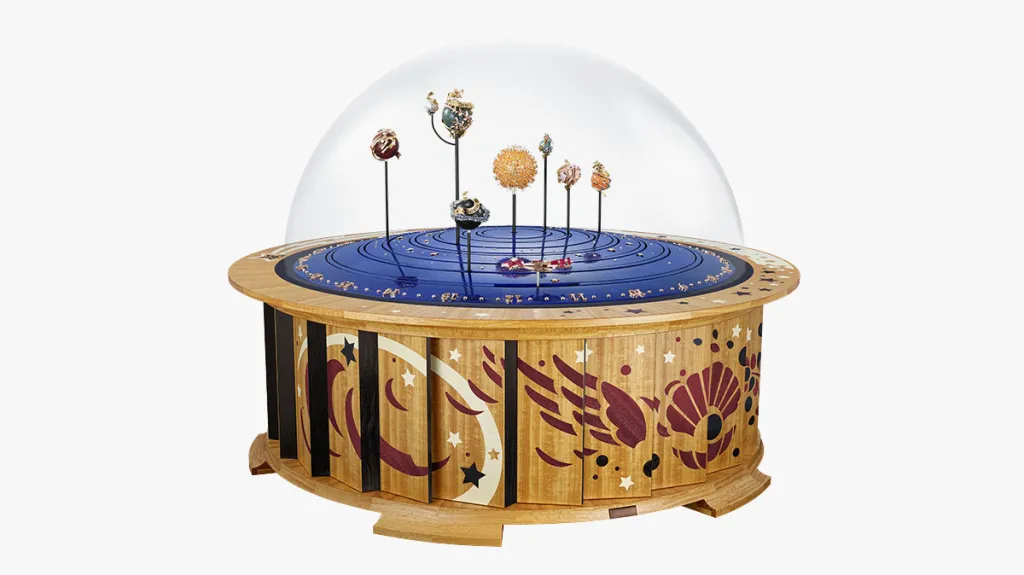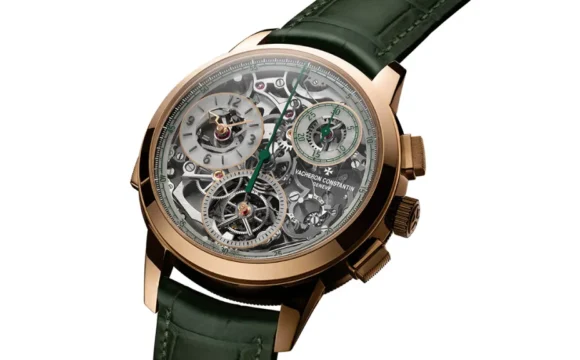Van Cleef followed up its jaw dropping one-of-a-kind Planétarium table clock with a new version this year with a base in lemon tree, ziricote, amaranth, and white holly. Its rotating stone and gem-set planets come adorned with gold ribbon with the engraved names of the planets inspired by 18th-century celestial charts. An array of mythological symbols such as shells for Venus and arrows for Mars. Mercury, for instance, comes in chalcedony surrounded by white gold and sapphires. Earth is in green jasper and two tones of sapphires.
It’s a beautiful work of art, but it’s also a wonder of engineering. Its complex mechanical movement moves each gem-set body at its actual heavenly rotation speed: Mercury completes its orbit in 88 days, Venus in 244, Earth in 365, Mars in 687, Jupiter in 11.86 years and Saturn in 29.5 years. The moon revolves around the Earth in 27.3 days. Of course, an on-demand activation sets the stars into motion whenever the owner pleases. All of this comes to life beneath a custom hand-blown glass dome.
The work done on Van Cleef’s table clocks is the kind of craftsmanship that was once made for the kings and queens of Europe—a rare relic of a time past, brought back to life for modern royalty. And while it offers plenty of bragging rights and status, the place of pride belongs to the artisans who, even in this era, have preserved the craftsmanship capable of rendering such incomparable treasures.
Size: 19.7 inches high and 66.5 in diameter
Material: Rose, white, and yellow gold, rubies, sapphires, spessartite garnets, diamonds, lapis lazuli, calcedony, pearl, jasper, jet, milky rose quartz, orange moonstone, obsidian, lemon tree, zircote, amaranth, white holly, glass, aluminum, brass, steel, black and bronze PVD and leather.
Price: One-of-a-kind, upon request
From the article by Paige Reddinger, Oren Hartov, Victoria Gomelsky, Carol Besler, Justin Fenner








